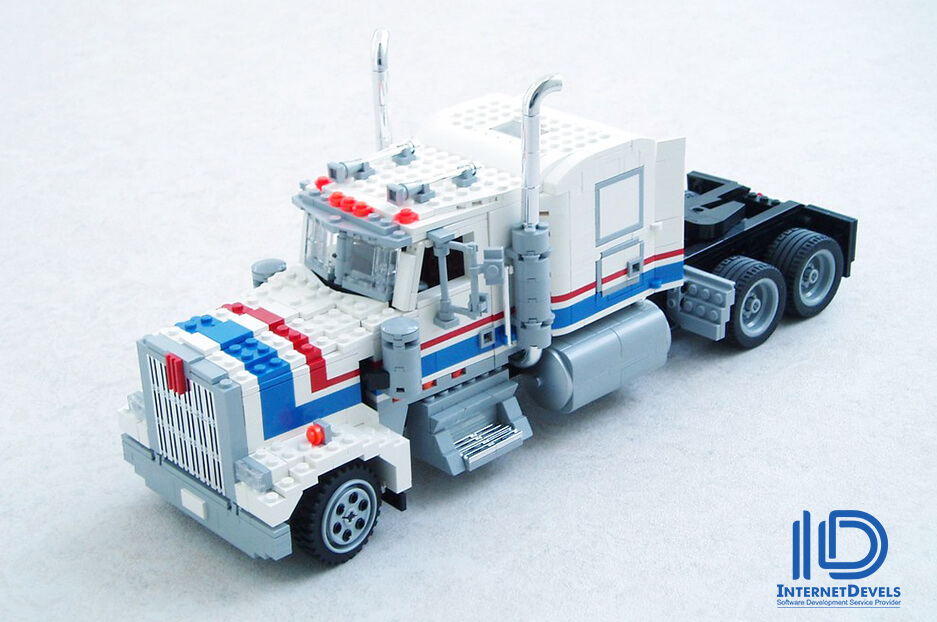Transport and logistics companies need a strong online presence due to the highly competitive market. So they benefit from professional websites that increase market awareness of their logistics, increase customer satisfaction, and improve their service productivity.
There are plenty of transport and logistics logistics website templates out there, but, of course, custom web development is much better than an off-the-shelf solution. Let’s see what is necessary in order to create a logistics company website and what functionality it should include.
Types of logistics company websites
We can single out these key types of websites for logistics companies:
- companies that do the freight forwarding themselves, so their website represents their own services
- freight marketplaces that connect carriers to manufacturers and retailers
Website design for logistics companies: useful features
What functionality will transportation, trucking, logistics, and haulage companies benefit from? This depends on the type of business we have described above, but, in any case, there are some highly recommended features to create a logistics or transportation services website with.
Real-time order tracking
It’s very important for freight senders and receivers to keep their hand on the pulse and know where the shipment currently is. An essential feature to create a logistics website is real-time tracking. All the customer needs to do is to enter the shipment ID into the tracking field and see its progress. Major transportation and logistics providers offer order tracking on their websites. In addition to being very convenient and stress-reducing, this feature can reduce the risks of accidental delays or mistakes and save your reputation.
Cost and time calculation
Timely delivery is often crucial for businesses because it’s about their procurement workflows and also for individuals who rely on your B2C (business to customer) logistics. So, according to the best logistics website design practices, your website needs to inform customers about the estimated delivery time so they know what to expect. Calculating the transportation costs (based on the weight, distance, country, and other factors that you are using in your logistics business model) is even easier and more predictable.
Online ordering
Best logistics company website design enables clients to book their shipment 24/7 from any device in a simple form. You will also need a centralized order and billing management dashboard on your website for admins with all the details of the order, which will greatly improve their operational efficiency.
Secure online payments
It’s great to give customers an option to pay for the logistics services directly on your website — e-commerce helps the logistics industry thrive. So one of the best trucking websites ideas is to provide a secure payment gateway. To attract more customers, you can offer multiple payment options so customers can choose based on their preferences.
Live support chat
In addition to shipment tracking, there should always be an opportunity to talk to a human when they need to resolve a problem or ask a question about the shipment process, documentation, or delivery specifics. Live chats and contact forms are a vital element for a logistics website.
Feedback and awards
Potential customers need to know they can entrust their freight to someone reliable. That’s why feedback, stars, awards, certificates, and similar elements that enhance your reputation should be placed on the main page of your transport and logistics company website.
Comparison and provider profiles
This feature suits you if you want to create a logistic website of a marketplace type. Enable the transportation carriers to register their profiles containing the details about their services, prices, fleet photos, and so on. When placing an order, a customer will appreciate a comparison between their estimated delivery times and rates and other conditions.
Mobile browsing
It is crucial to create a logistics website with full mobile compatibility. Be sure your web pages can be viewed and used conveniently from any device. Buttons, forms, shipment tracking features — everything should be well-positioned and easy to click on. You can also create a mobile app for your transportation and logistics company, but remember that many users will not install it due to their device capacity limitations or just because they are not used to apps.
Usability for non tech-savvy users
If you want to be the logistics company of choice in your region or across the globe, it’s vital to tailor the site to all users. For users who are not familiar with online ordering or rarely use the Internet services, it can be very hard to take the needed steps. Make it straightforward and intuitive as to what steps are required. Simple interface, the right element order, prominent buttons, concise CTAs, and many other UX & UI design tweaks will make this mission complete.
Website accessibility
Create your transport and logistics logistics company website with accessibility in mind. Customers with all kinds of disabilities should be able to use your site with ease. Is it possible to place or track an order with just a keyboard? Do forms have the proper error validation? Do you have a clear semantic markup so screen readers can lead users through your website? These and many other accessibility issues need special attention.
Create a logistics company website!
If you are interested in transport and logistics website design services, you have come to the right place. Just like logistics companies know the value of time and money, so does our web development team. We will offer you a cost-effective solution with fast delivery. Contact us now to create a logistics company website according to the best practices!

